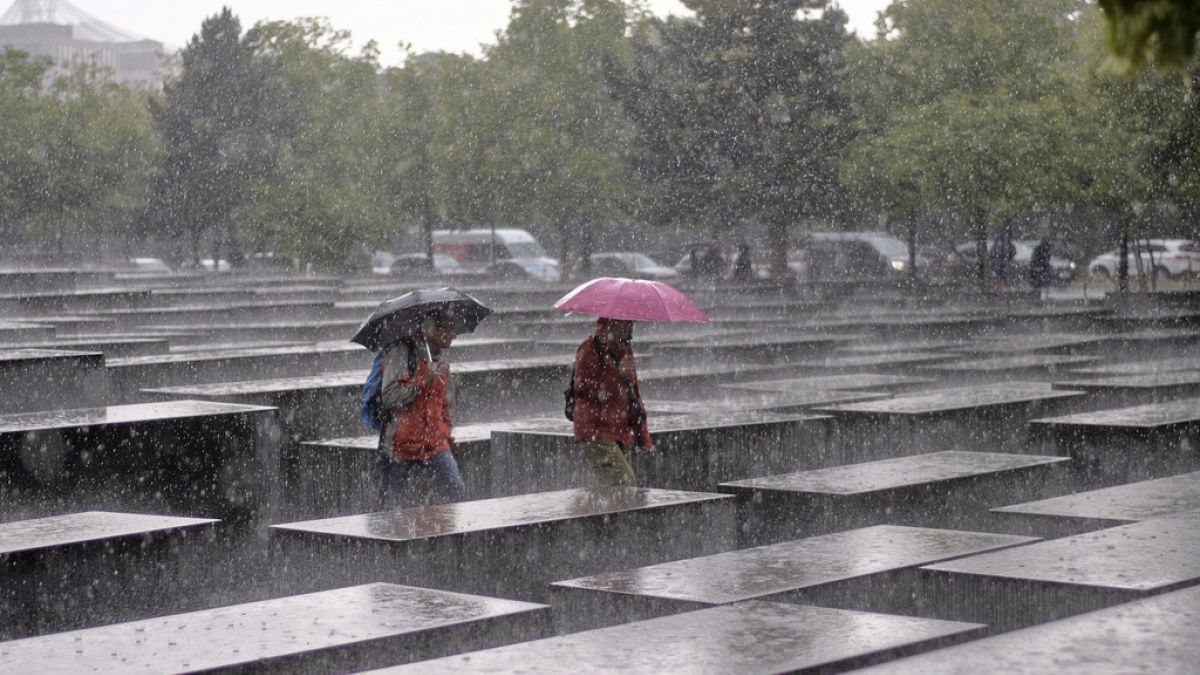

As environmental challenges ripple across Europe, communities and cities are finding innovative pathways to adapt and safeguard their livelihoods and natural surroundings. Across the continent, from urban centers installing unique infrastructures to wildfire defenses in southern regions, a renewed focus on resilience and innovation showcases humanity’s adaptability in the face of change.
In Scandinavia, Sweden and Norway are grappling with a prolonged heatwave, while their southern neighbor, Germany, looks skyward, anticipating thunderstorms. In the southern regions of Germany, persistent rainfall draws contrasts against the backdrop of extreme heat further north. This precipitation has become a characteristic marker of the changing climates at these latitudes. Despite the challenges posed by these weather extremes, the shifting patterns in Scandinavia and Germany underscore the interconnectedness of European weather systems, revealing broader climate trends that call for collective introspection and adaptation.
Elsewhere, urban innovation beckons in the city of Amsterdam, where a new initiative aims at preserving local wildlife. The city’s iconic canals, teeming with life, are set to become safer havens for animals with the installation of hundreds of tiny staircases along the waterway edges. With a budget of €100,000 committed to the project, Amsterdam’s authorities are demonstrating how thoughtful integration of human and animal needs can lead to sustainable urban environments. These interventions remind us that coexistence is not only possible but can thrive under conscious stewardship and planning.
Meanwhile, Cyprus and Greece are experiencing the immediate aftermath of wildfires, highlighting the pressing need for robust disaster management strategies. In Cyprus, as the flames subside, efforts to restore normalcy are underway, focusing on rebuilding the affected regions and supporting those deeply impacted by the loss. The somber recovery phase brings to light the resilience of the local communities as they rebuild amidst the challenges posed by displaced residents and disrupted resources.
Over in Athens, the shadow of smoke has loomed large over its northern suburbs, with wildfires sparking evacuations and emergency responses. Residents of the Kryoneri suburb were alerted via multiple SMS notifications, prompting timely evacuations and mitigating potential harm. This scenario emphasizes the critical role of communication and preparation in managing natural crises and safeguarding populations.
Furthermore, along the coasts of La Manche, a caravan named “Camping j’adore” traverses tourist sites to foster dialogue about climate change and the rising sea levels. By engaging vacationers with activities, including discussions and local culinary experiences, the initiative emphasizes the shared responsibility of addressing coastal vulnerabilities in the face of fluctuating climates. Such grassroots movements play a pivotal role in increasing awareness and nurturing proactive mindsets toward environmental stewardship.
The varied responses across these European regions illustrate humanity’s resilience and ingenuity when faced with environmental transformations. They remind us that while challenges are omnipresent, so too are solutions rooted in community, innovation, and perseverance. As these stories unfold, they inspire a collective reflection on how we can work together to safeguard the earth’s intricate balance and the myriad life forms depending on it. Amidst changing climates, cities and countryside alike forge paths of harmony, striving for a balance where human and natural worlds coexist and flourish. This ongoing journey invites us all to be part of a narrative where adaptation brings hope and action fosters sustainable futures.
Source: {link}
